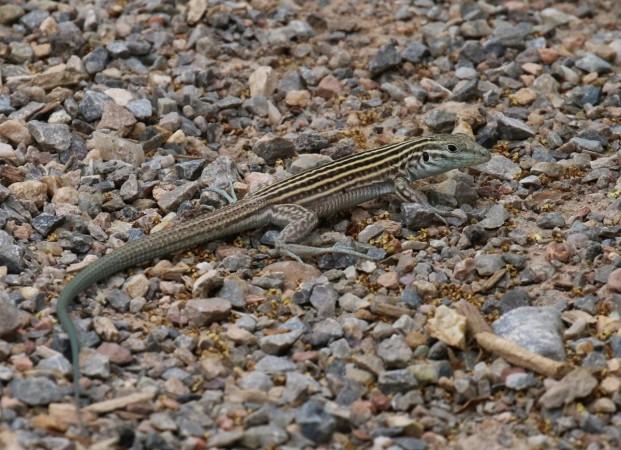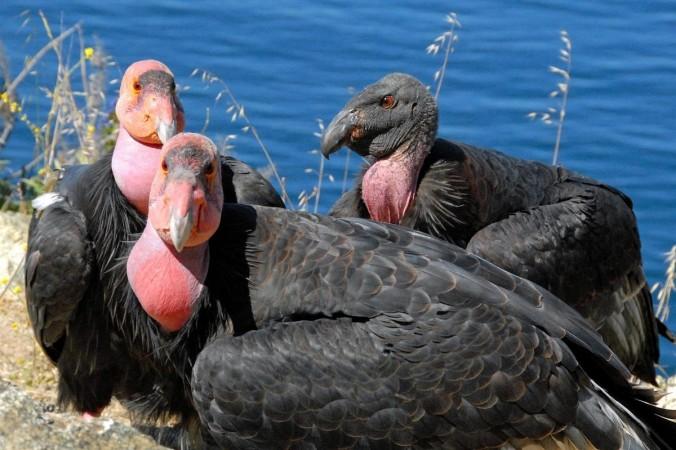Most of us are familiar with Dr. Ian Malcolm's (played by Jeff Goldblum) iconic line "Life finds a way" from Jurassic Park. It is stated in the context of female dinosaurs potentially finding a way to reproduce in the absence of males. However, in an unusual twist to the phrase, scientists have reported the first confirmed cases of parthenogenesis—a form of asexual reproduction—in California condors (Gymnogyps californianus) despite the females having access to fertile males.
In a new study, researchers from the San Diego Zoo Wildlife Alliance announced the birth of two California condor chicks born to two different dams (female condors). The accidental discovery was made during a routine analysis of samples obtained during a breeding program of the species. Molecular genetic testing revealed that the condor chicks were genetically related to their respective mothers but had no genetic relations to a male, thereby, confirming that they were 'fatherless'.
"We believe that our findings represent the first instance of facultative avian parthenogenesis in a wild bird species, where both a male and a female are housed together. Still, unlike other examples of avian parthenogenesis, these two occurrences are not explained by the absence of a suitable male," said Dr. Cynthia Steiner, co-author of the study, in a statement. The findings were published in the Journal of Heredity.
No Males, Thank You

Parthenogenesis literally means 'virgin birth' (Greek: Parthenos means 'virgin' and genesis means 'birth' or 'creation'). It is a form of asexual reproduction where a female gamete or egg develops into offspring without being fertilized by the male gamete or sperm. It is not uncommon among animals. Certain species of invertebrates such as scorpions, a few species of ants, bees, and roundworms, among others, are known to reproduce in this manner.
Vertebrates belonging to a few species of amphibians, snakes, lizards, and birds can also reproduce through parthenogenesis. For example, New Mexico whiptail (Aspidoscelis neomexicanus) is an exclusively female species of lizards that reproduce like this. However, in certain animals, it is an optional mode of reproduction. Komodo dragons (Varanus komodoensis)—that generally reproduce sexually—have been found to occasionally bear offspring through parthenogenesis.
Though seen in birds, the phenomenon is rather rare in them. It is generally observed in females who do not have access to males, and mostly in domestic birds. For example, these rare occurrences have been reported in turkeys. Also, parthenogenesis has been observed in captive finches and domestic pigeons as well. However, in the latter cases, the eggs did not progress to the hatching phase.
First 'Virgin Births'

So what makes the parthenogenetic births of the two condor chicks different from those recorded in other species of birds? Firstly, each of the dams had been housed continuously with a fertile male. Secondly, both the females had several offspring. While one had 11 chicks, the other—which was paired with a male for over 20 years—had 23 chicks. Also, the second female reproduced two more times after the parthenogenetic birth.
Importantly, the discovery was entirely by chance. The researchers were conducting a routine analysis of biological samples that had been collected from 911 California condors over the course of over 30 years as part of the collaborative and successful California Condor Recovery Program. The breeding program is aimed at bolstering the numbers of California condors that are a 'Critically Endangered' species.
It was during this exercise that they stumbled upon the data from the two chicks. Though one had passed away at the age of two in 2003, and the other died in 2017 at the age of eight, the systematic collection of biological samples paved the way for the exceptional finding years later.
Confirming without Doubt

When 467 male California condors were tested during parentage analysis, none of them emerged as the father of the two condors chicks. However, when uniparental (single parent) inheritance of DNA was evaluated, including candidate sire genotypes that were similar to the known dam genotypes, it was confirmed that they were indeed produced by parthenogenesis.
"This is truly an amazing discovery. We were not exactly looking for evidence of parthenogenesis, it just hit us in the face. We only confirmed it because of the normal genetic studies we do to prove parentage. Our results showed that both eggs possessed the expected male ZZ sex chromosomes, but all markers were only inherited from their dams, verifying our findings," explained Dr. Oliver Ryder, co-author of the study.
The discovery has the potential to redefine conservation science and wildlife genetics. It also raises the possibility of such 'virgin births' occurring in several species without catching the eye of the scientific community. "These findings now raise questions about whether this might occur undetected in other species," concluded Dr. Ryder.

















